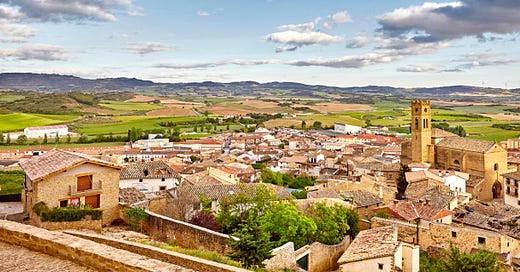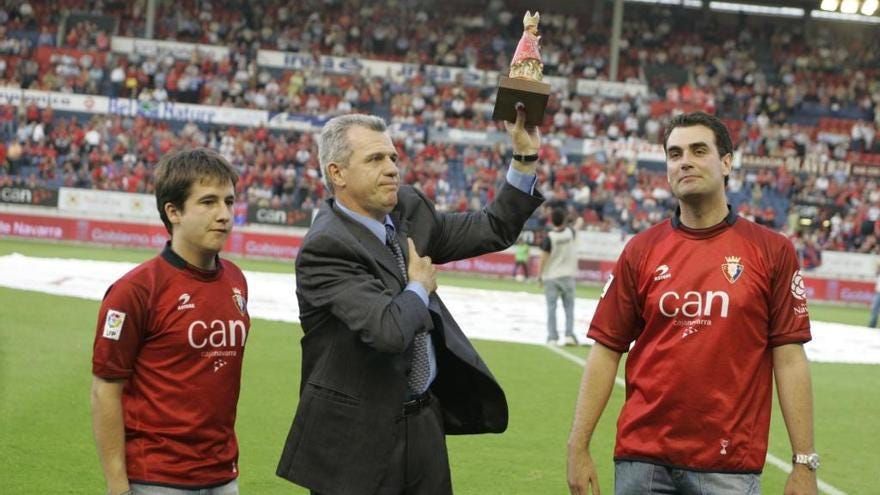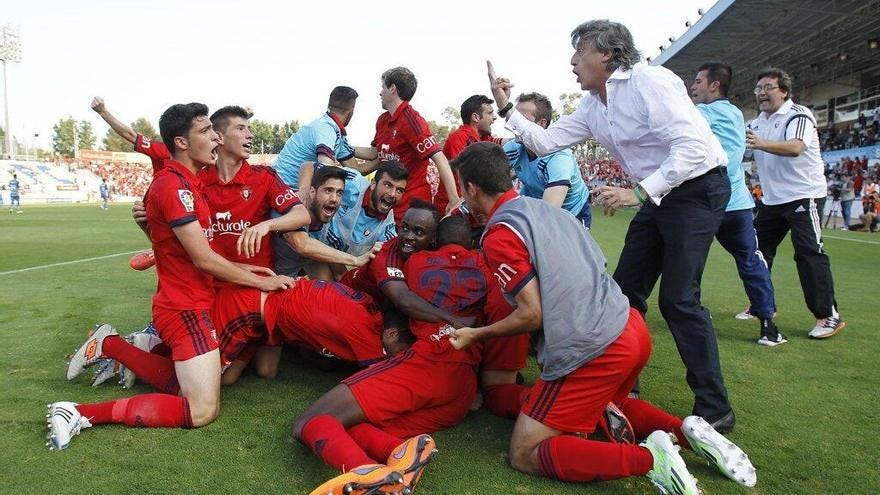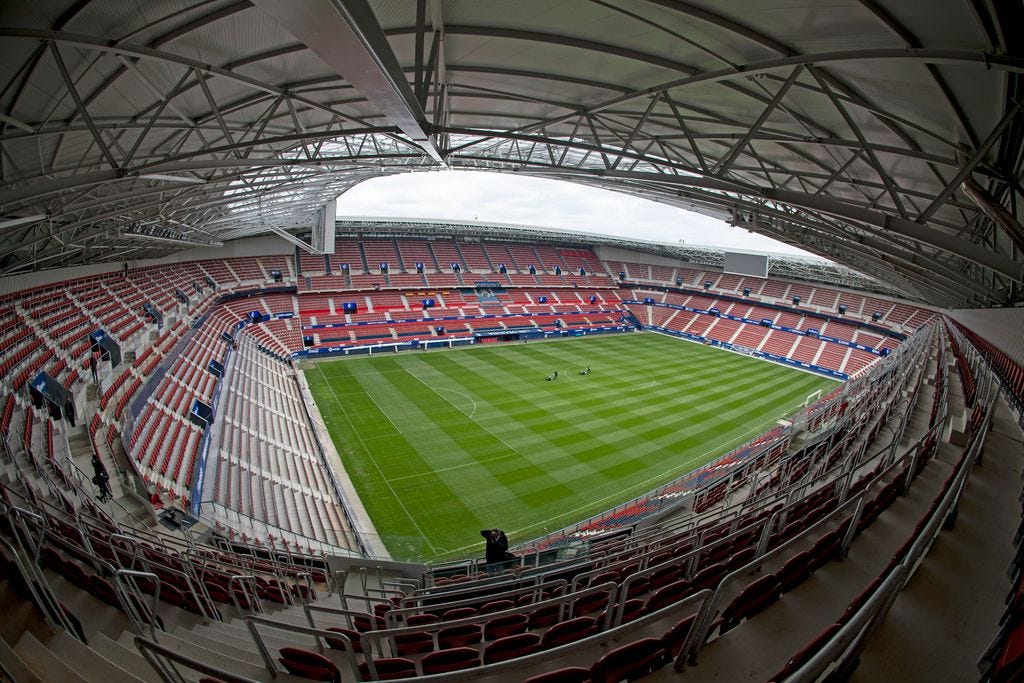State of play: Navarre
Spain is made up of 17 unique and autonomous regions and regional pride is as big as national pride in what can often feel a fragmented and divided country.
After our last regional visit to the Canaries we take a complete change up as we head to the North and Navarre. Navarre is in the northeastern part of Spain and borders France, Aragon, La Rioja and most importantly when it comes to the identity of the region, the Basque Country.
Navarre is known for San Fermin where six bulls run through the city of Pamplona, a city of beauty with it’s old town, historical sites and the looming ominous view of the Pyrenees in the distance.
Navarre is defined by its rugged mountains, valleys and it’s complex identity with some seeing it as an extension of the Basque country particularly in the Northern parts of the region, others seeing the region as a key part of Spanish identity and then those who see themselves as Navarrese and distinct from both groups.
There is one thing everyone agrees on though and that is football in Navarre is Osasuna and Osasuna is the bastion of the region. Similar to Cantabria which we looked at earlier in the series only one team has cut through when it comes to football in the region and the club also highlights the nuances and identity of the region. Only one club has ever played La Liga football or indeed even reached Segunda from the region albeit they’ve never won a major trophy.
Osasuna were founded on the 24th October 1920 in the city of Pamplona, the capital of the region. The word Osasuna might seem unusual to those who understand Spanish and that is because it isn’t a Spanish word but a Basque word meaning health. Identity is complex though and indeed after the civil war the region had powerful support after the notorious brigades of Navarre which had been a vital cog in Francos war machine. That is despite the fact the club itself was decimated during the civil war with at least ten members of staff including players having ended up either murdered, persecuted or in prison. A play-off was arranged between Osasuna and Atletico Aviacion (Atletico Madrid) for the last La Liga spot on the resumption of football in 1939 a tie they lost.
That loss set the club back and it took until 1956 for the club to establish itself as a La Liga side with a spell of six La Liga seasons out of seven. Los Rojillos then went on a run of becoming a yo-yo side between Segunda and the third tier until 1980 when Osasuna truly established themselves as a fixture in La Liga.
During this period of top flight stability the club finished 5th and 4th twice qualifying for the UEFA Cup and even eliminating Rangers along the way. 14 successive seasons were spent in the top flight until relegation in 94 which led to a 6 year absence. Osasuna bounced back in 2001 and after steady progression made it to the Copa del Rey final losing to Real Betis in extra time. They roared back the following season finishing 4th in La Liga and entering the Champions League qualifiers where they went out to Hamburg. That though led them to the UEFA Cup and they reached the semi finals before like countless opponents before and since went out to Sevilla.
Javier Aguirre was the coach during those days and is still well loved in the region Aguirre’s parents were from the Basque Country but left for Mexico after the civil war. The team was also full of internationals such as John Aloisi, Pierre Webo and Savo Milosevic. While the club flourished with the European run that season was also the highpoint with the club increasingly fighting in the bottom half of the table before eventually falling through the trapdoor in 2014.
Financially the club was staring at oblivion with debts of €70 million. To help to payoff the debt the club gave their stadium and training ground to local tax authorities. Six of the board were found guilty of misappropriation of funds, false accounting, falsifying documents and corruption with money missing from the clubs accounts and bribery scandals. They also saw restrictions in what they could pay players meaning any signings had to come in on the minimum contract. Osasuna could have gone out of business and almost fell into the third tier but a final day draw coming from 2-0 down with an 89th minute equaliser away at Sabadell saved the club.
The Recovery
It took a lot to build the club back up both it’s reputation and it’s finances but in Luis Sabalza and Francisco Canal they had the perfect combination of savvy people with a love for the club and a realisation it wouldn’t be a quick fix. They focused on paying the debt off while also investing and focusing on the academy. The project for the academy was called Tajonar 2017 a name of the clubs academy and training ground and it was to make it again a conveyor belt of talent.
The club has used the academy as it’s foundation and with a nucleus of academy players achieved promotion back to La Liga, their stay was short lasting just one season but they returned in 2019 to the top flight and have enjoyed some of their best years. In Basque coach Jagoba Arrasate they had someone who understood the club and the region. He was an understated and underrated coach by many outside of Navarre and took them from Segunda to European football and a Copa del Rey final. After six years he left for Mallorca but is still loved by the fanbase for his spell.
Vicente Moreno came in to replace him but has struggled to live up to his predecessor, he’s taken Osasuna to the battle for a conference league place but with his one year contract ending has decided to announc
Tajonar
Osasuna has always been well represented through its academy, the club has brought through Navarese players such as record appearance holder Patxi Puñal, Roberto Torres, Cezar Azpiliceuta, Nacho Monreal, Javi Martinez, Raul Garcia and Mikel Merino. With being in a region that produces talent it also brings vultures and primarily Athletic Club. Players from Navarre qualify as Basque by Athletic Clubs definition and policy and this has caused increasing tensions between the clubs.
When Osasuna sold Alex Berenguer to Torino they put a clause in for additional money if Torino sold him to Athletic Club, three seasons later and Berenguer was on his way to Bilbao and Osasuna banked an additional €1.5 million. The attacker was just the latest in a long list, as far back as 2006 Athletic Club took Javi Martinez from their B team for €6 million he went on to be sold for his buyout clause of €40 million. Even today the club has to fight with their neighbours with Oihan Sancet having been poached from Osasuna’s academy. Even players who have no affiliation with the club such as Inaki and Nico Williams came from Pamplona but were spotted and recruited by Athletic Club at an early age.
At times relations between the two clubs have been broken but their is a mutual respect between the clubs and a fierce rivalry in the right way between the sides.
The fanbase
One of the most impressive things about Osasuna is the fanbase, the club is one of four in Spain that’s owned by its members alongside Real Madrid, Barca and Athletic Club. This helps the club to be in touch with it’s community and fanbase and the club is one of the most fan orientated in Europe.
In 2009 the fans broke the record for the loudest sound recorded at a La Liga stadium with the sound equivalent to the sound of a jet engine. That is despite the fact the crowd was 19,000 and competing against grounds such as the Bernabau and the Nou Camp which can fit in over four times that. Even today that record hasn’t been beaten and El Sadar is a real cauldron. The club has done major work to renovate El Sadar and it’s one of the best stadiums and matchday experiences in Spain.
It’s common to see Basque flags across the stadium particularly in the ultras section where they feel fiercely Basque and outsiders will often see the club as Basque when it is actually more nuanced but overall the fanbase is proud of it’s Basque culture.
When the club was threatened with expulsion from the UEFA Conference League due to the issues with the previous board, the city of Pamplona and the region mobilised to protest and support the club and eventually the ban was suspended ensuring Osasuna got their rightful place in the Conference League.
The club not only represent the region but also those who have left the region, Daniel Munarriz an Osasuna fan based in the UK is a prime example. His father was from Pamplona and despite having lived in the UK for 25 years passed his love for his club on to his son. Daniel has travelled to the home region of his father three times over the years to catch an Osasuna game and describes those days as some of the best of his life.
Size matters
When it comes to looking at why only one club has ever made it to professional football in the region it’s as simple as demographics, Pamplona in terms of population is almost ten times bigger than any other city in the region and Navarre is a small region, by population it’s the 15th biggest out of the 17 regions. This is why Navarre is Osasuna and Osasuna is Navarre, many fans almost view the club as a national team for the region and it’s academy and it’s ability to consistently produce talent for the first team helps to reinforce that feeling.
State of play
Osasuna is again in a good place, they’re one of the most stable and well run clubs not only in Spain but Europe. The club is owned by its members and nobody will be betting the house to push the club beyond their means. Sustainability and continuing to produce players are key to the clubs future. In recent seasons they’ve not only qualified for the Conference League qualifiers but also made the Copa del Rey final where they narrowly missed out to Real Madrid. While the club will always lose players to Athletic Club and other clubs with greater financial resources and even this week Real Madrid have taken a 13 year old out of the academy of Osasuna their ability to provide a platform for players from the region will continue to help the club and it’s long term plans.








